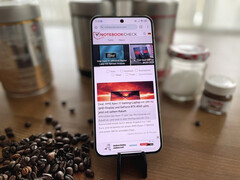Compact, yet plenty of power: Xiaomi is remaining true to its principles with the Xiaomi 14. Compared to the Xiaomi 13, neither the form factor of 6.36 inches nor the high-quality design have changed. The display and back cover are both protected by Corning Gorilla Glass Victus and are joined by an aluminum frame with a high-gloss finish. Internally, however, a lot has changed.
Snapdragon 8 Gen 3 and up to 16 GB RAM
Xiaomi has given the new generation of its top-of-the-range smartphone an SoC upgrade. While the Snapdragon 8 Gen 2 was previously installed, the Snapdragon 8 Gen 3 has now taken over. This significantly outperformed its already-fast predecessor in our tests and achieved 22% higher performance in the AnTuTu v9 benchmark, for example. Together with the responsive OLED panel and up to 16 GB of RAM, the Xiaomi 14 is extremely smooth to use.
Cooperation with Leica, HyperOS instead of MIUI
In our review, the Xiaomi 14 also earned points for its revised camera setup. Apart from a few details, it is similar to the camera setup of the Xiaomi 14 Pro and features a 50 MP main, ultra-wide-angle and telephoto camera. Compared to the Xiaomi 13, the low-light performance in particular has improved, as has the imaging performance of the ultra-wide-angle camera.
The 120 Hz OLED panel of the Xiaomi 14 works with a touch sampling rate of 240 Hz, which can be increased to up to 2160 Hz for games. In SDR, the screen reaches brightness levels of up to 1500 nits and can even increase to just over 3000 nits in HDR.
The Xiaomi 14 is currently only available via import, but is expected to be officially launched in Europe in February. Also new is HyperOS, which replaces MIUI as the operating system. HyperOS is based on Android 14 and is a combination of Linux and the Vela IoT platform, according to Xiaomi.
Read the full review of the Xiaomi 14 here.















